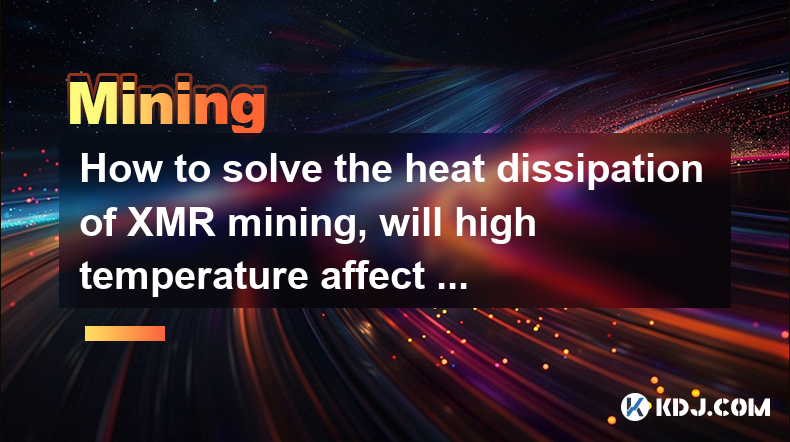-
 Bitcoin
Bitcoin $107,544.4358
-0.02% -
 Ethereum
Ethereum $2,512.4208
3.03% -
 Tether USDt
Tether USDt $1.0002
0.00% -
 XRP
XRP $2.2954
4.88% -
 BNB
BNB $658.9416
1.53% -
 Solana
Solana $156.9061
3.43% -
 USDC
USDC $0.9999
0.01% -
 TRON
TRON $0.2789
1.11% -
 Dogecoin
Dogecoin $0.1666
1.20% -
 Cardano
Cardano $0.5831
4.07% -
 Hyperliquid
Hyperliquid $40.5472
6.61% -
 Bitcoin Cash
Bitcoin Cash $517.2319
5.56% -
 Sui
Sui $2.8191
0.12% -
 Chainlink
Chainlink $13.5273
1.06% -
 UNUS SED LEO
UNUS SED LEO $9.1224
1.19% -
 Avalanche
Avalanche $18.1354
0.37% -
 Stellar
Stellar $0.2401
1.68% -
 Toncoin
Toncoin $2.9528
2.57% -
 Shiba Inu
Shiba Inu $0.0...01152
-0.24% -
 Litecoin
Litecoin $86.8100
-0.26% -
 Hedera
Hedera $0.1520
2.18% -
 Monero
Monero $318.1344
2.43% -
 Polkadot
Polkadot $3.4355
-0.04% -
 Dai
Dai $1.0001
0.02% -
 Bitget Token
Bitget Token $4.5482
-1.07% -
 Ethena USDe
Ethena USDe $1.0003
0.01% -
 Uniswap
Uniswap $7.2490
0.40% -
 Aave
Aave $278.1005
0.65% -
 Pepe
Pepe $0.0...09893
2.45% -
 Pi
Pi $0.5129
-2.55%
How to solve the heat dissipation of XMR mining, will high temperature affect stability?
Proper heat dissipation is crucial for XMR mining to prevent thermal throttling and ensure stability; use ventilation, cooling solutions, and environmental control to manage temperatures effectively.
May 05, 2025 at 09:29 pm

Mining cryptocurrencies like Monero (XMR) can be an intensive process that generates significant heat. Proper heat dissipation is crucial not only for maintaining the performance and longevity of your mining equipment but also for ensuring the stability of the mining operation. In this article, we will explore various strategies to manage heat dissipation in XMR mining and discuss how high temperatures can impact the stability of your mining setup.
Understanding Heat Generation in XMR Mining
Mining XMR involves solving complex mathematical problems using specialized hardware, such as GPUs or ASICs. This process consumes a lot of electrical power, which is converted into heat. The more powerful the hardware, the more heat it will generate. High-performance GPUs, commonly used for XMR mining, can easily reach temperatures of over 80°C during intense mining sessions. This heat can lead to thermal throttling, where the hardware reduces its performance to manage temperature, which in turn affects mining efficiency and stability.
Impact of High Temperatures on Mining Stability
High temperatures can significantly affect the stability of your XMR mining operation. When hardware operates at elevated temperatures, it is more prone to thermal throttling, which can cause the mining software to crash or become unstable. Over time, continuous exposure to high temperatures can lead to hardware degradation, reducing the lifespan of your mining equipment. Additionally, high temperatures can cause the system to become unstable, leading to unexpected shutdowns and interruptions in mining operations.
Strategies for Effective Heat Dissipation
To manage heat dissipation effectively, miners need to implement a combination of hardware and environmental solutions. Here are some strategies that can help:
Proper Ventilation: Ensure that your mining rig is placed in a well-ventilated area. This can help dissipate heat more efficiently. Consider using fans to improve airflow around the mining equipment.
Cooling Solutions: Use dedicated cooling solutions such as heatsinks, fans, and liquid cooling systems. For GPUs, installing aftermarket cooling solutions can significantly reduce operating temperatures.
Thermal Pads and Paste: Applying high-quality thermal pads and paste can improve the transfer of heat away from the GPU or ASIC. Make sure to follow the manufacturer's guidelines when applying these materials.
Environmental Control: If possible, set up your mining rig in a cooler environment. Using air conditioning can help maintain lower ambient temperatures, which in turn can help keep your mining hardware cooler.
Step-by-Step Guide to Improving Heat Dissipation
To improve heat dissipation in your XMR mining setup, follow these detailed steps:
Assess Current Temperatures:
- Use software like GPU-Z or HWMonitor to monitor the temperatures of your mining hardware during operation.
- Identify which components are running at the highest temperatures.
Enhance Airflow:
- Ensure that the mining rig is not placed in an enclosed space.
- Install additional fans to improve airflow. Position fans to blow air across the hottest components.
- Consider using a fan controller to adjust fan speeds based on temperature.
Install Cooling Solutions:
- Purchase and install aftermarket cooling solutions such as heatsinks or liquid cooling systems.
- Follow the manufacturer's instructions carefully to ensure proper installation.
- For GPUs, consider replacing the stock cooler with a more efficient aftermarket solution.
Apply Thermal Materials:
- Clean the existing thermal paste from the GPU or ASIC using isopropyl alcohol and a lint-free cloth.
- Apply a thin, even layer of high-quality thermal paste to the GPU or ASIC.
- Install a new thermal pad if recommended by the cooling solution manufacturer.
Monitor and Adjust:
- After implementing these changes, monitor the temperatures again using the same software.
- Adjust fan speeds and cooling solutions as needed to achieve optimal temperatures.
Choosing the Right Hardware for XMR Mining
Selecting the right hardware is crucial for managing heat dissipation. When choosing GPUs or ASICs for XMR mining, consider the following factors:
- Thermal Design Power (TDP): Opt for hardware with a lower TDP, as these will generate less heat.
- Cooling Capabilities: Choose hardware that comes with efficient cooling solutions, such as larger heatsinks or built-in liquid cooling.
- Overclocking Potential: Hardware that can be overclocked without generating excessive heat is ideal for maintaining stability during mining.
Maintaining Your Mining Setup for Optimal Performance
Regular maintenance is essential for ensuring that your XMR mining setup continues to operate efficiently and at lower temperatures. Here are some maintenance tips:
- Clean Dust Regularly: Dust can accumulate on heatsinks and fans, reducing their effectiveness. Use compressed air to clean these components regularly.
- Check and Replace Thermal Materials: Over time, thermal paste and pads can degrade. Check and replace these materials as needed to maintain optimal heat transfer.
- Inspect Cooling Solutions: Ensure that fans and cooling systems are functioning correctly. Replace any faulty components immediately.
Frequently Asked Questions
Q: Can I use water cooling for my XMR mining setup?
A: Yes, water cooling can be an effective way to manage heat dissipation in XMR mining. Liquid cooling systems can offer better heat transfer compared to air cooling, which can help keep your mining hardware at lower temperatures. However, they are more complex to set up and maintain, so consider your technical expertise before opting for this solution.
Q: How often should I monitor the temperatures of my mining hardware?
A: It is recommended to monitor the temperatures of your mining hardware at least once a day, especially during the initial setup and after making any changes to your cooling solutions. Regular monitoring helps you identify any potential issues early and adjust your setup accordingly.
Q: Is it safe to mine XMR in a hot climate?
A: Mining XMR in a hot climate can be challenging due to the higher ambient temperatures. To ensure safe and stable mining, you should implement robust cooling solutions and possibly use air conditioning to maintain a cooler environment for your mining setup. Always monitor temperatures closely to prevent overheating.
Q: Can overclocking my mining hardware increase heat dissipation issues?
A: Yes, overclocking can significantly increase the heat generated by your mining hardware. If you choose to overclock, ensure that you have adequate cooling solutions in place to manage the increased heat. Monitor temperatures closely to avoid thermal throttling and maintain stability.
Disclaimer:info@kdj.com
The information provided is not trading advice. kdj.com does not assume any responsibility for any investments made based on the information provided in this article. Cryptocurrencies are highly volatile and it is highly recommended that you invest with caution after thorough research!
If you believe that the content used on this website infringes your copyright, please contact us immediately (info@kdj.com) and we will delete it promptly.
- OKX and Binance Delist Trading Pairs: What's Going On?
- 2025-07-01 02:30:12
- Pepeto vs. Shiba Inu: Can the New Meme Coin Dethrone the King?
- 2025-07-01 02:50:11
- Saylor, Bitcoin, Holdings: Strategy's Crypto Empire Grows
- 2025-07-01 02:30:12
- Coinbase, Altcoins, and Listings: What's the Buzz?
- 2025-07-01 00:30:11
- Chainlink's Bullish Signals: Investors Bet on Long-Term Value
- 2025-07-01 00:50:12
- CICADA Finance Soars on BNB Chain: A TGE Deep Dive
- 2025-07-01 01:30:11
Related knowledge

What is liquidity mining in DeFi? How to participate and calculate the income?
Jun 20,2025 at 03:21pm
Understanding Liquidity Mining in DeFiLiquidity mining is a core concept in the decentralized finance (DeFi) ecosystem that allows users to earn rewards by providing liquidity to decentralized exchanges (DEXs) or lending platforms. In traditional finance, liquidity providers are usually institutional players, but DeFi democratizes this process, enabling...

What is the mining mechanism of digital currency? What hardware and cost investment are required?
Jun 23,2025 at 06:29am
Understanding the Mining Mechanism of Digital CurrencyThe mining mechanism of digital currency is a foundational process that ensures transaction validation and network security. In most Proof-of-Work (PoW) cryptocurrencies like Bitcoin, miners compete to solve complex mathematical puzzles using computational power. The first miner to find a valid solut...

Analysis of hybrid mining protocol: PoW+PoS hybrid profit calculation
Jun 23,2025 at 10:15am
Understanding Hybrid Mining ProtocolsIn the realm of blockchain technology, consensus mechanisms are pivotal in maintaining network integrity and transaction validation. A hybrid mining protocol combines two or more consensus algorithms to achieve a balance between security, decentralization, and energy efficiency. The most commonly adopted hybrid model...

How to operate option mining? Hedging strategy and profit structure
Jun 21,2025 at 03:29pm
What is Option Mining?Option mining refers to a decentralized finance (DeFi) strategy where participants provide liquidity or take specific derivative positions in options protocols to earn rewards. Unlike traditional yield farming, option mining often involves liquidity provision for options markets, allowing users to generate returns through premiums ...

What are the advantages of Layer2 mining? Gas saving and project inventory
Jun 20,2025 at 04:50am
Understanding Layer2 Mining and Its SignificanceLayer2 mining refers to the process of participating in decentralized applications or protocols that operate on top of a primary blockchain (such as Ethereum) using scaling solutions like Optimism, Arbitrum, or zkSync. Unlike traditional mining on Layer1 blockchains, which often involves high computational...

Is contract mining safe? Key points of smart auditing and vulnerability prevention
Jun 19,2025 at 08:08pm
Understanding Contract Mining in the Cryptocurrency SpaceContract mining refers to a method within blockchain ecosystems where users can participate in mining operations through smart contracts. Unlike traditional mining, which requires physical hardware and technical expertise, contract mining allows participants to invest funds into a mining pool or p...

What is liquidity mining in DeFi? How to participate and calculate the income?
Jun 20,2025 at 03:21pm
Understanding Liquidity Mining in DeFiLiquidity mining is a core concept in the decentralized finance (DeFi) ecosystem that allows users to earn rewards by providing liquidity to decentralized exchanges (DEXs) or lending platforms. In traditional finance, liquidity providers are usually institutional players, but DeFi democratizes this process, enabling...

What is the mining mechanism of digital currency? What hardware and cost investment are required?
Jun 23,2025 at 06:29am
Understanding the Mining Mechanism of Digital CurrencyThe mining mechanism of digital currency is a foundational process that ensures transaction validation and network security. In most Proof-of-Work (PoW) cryptocurrencies like Bitcoin, miners compete to solve complex mathematical puzzles using computational power. The first miner to find a valid solut...

Analysis of hybrid mining protocol: PoW+PoS hybrid profit calculation
Jun 23,2025 at 10:15am
Understanding Hybrid Mining ProtocolsIn the realm of blockchain technology, consensus mechanisms are pivotal in maintaining network integrity and transaction validation. A hybrid mining protocol combines two or more consensus algorithms to achieve a balance between security, decentralization, and energy efficiency. The most commonly adopted hybrid model...

How to operate option mining? Hedging strategy and profit structure
Jun 21,2025 at 03:29pm
What is Option Mining?Option mining refers to a decentralized finance (DeFi) strategy where participants provide liquidity or take specific derivative positions in options protocols to earn rewards. Unlike traditional yield farming, option mining often involves liquidity provision for options markets, allowing users to generate returns through premiums ...

What are the advantages of Layer2 mining? Gas saving and project inventory
Jun 20,2025 at 04:50am
Understanding Layer2 Mining and Its SignificanceLayer2 mining refers to the process of participating in decentralized applications or protocols that operate on top of a primary blockchain (such as Ethereum) using scaling solutions like Optimism, Arbitrum, or zkSync. Unlike traditional mining on Layer1 blockchains, which often involves high computational...

Is contract mining safe? Key points of smart auditing and vulnerability prevention
Jun 19,2025 at 08:08pm
Understanding Contract Mining in the Cryptocurrency SpaceContract mining refers to a method within blockchain ecosystems where users can participate in mining operations through smart contracts. Unlike traditional mining, which requires physical hardware and technical expertise, contract mining allows participants to invest funds into a mining pool or p...
See all articles

























































































